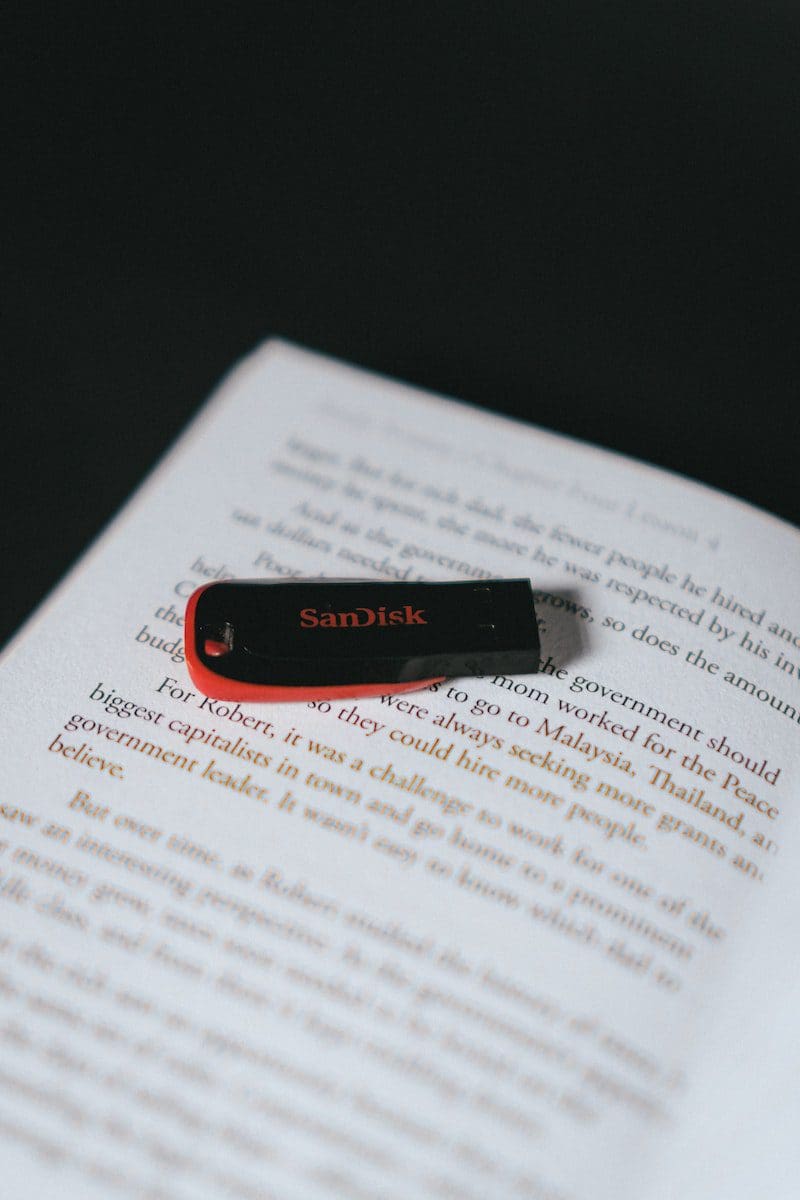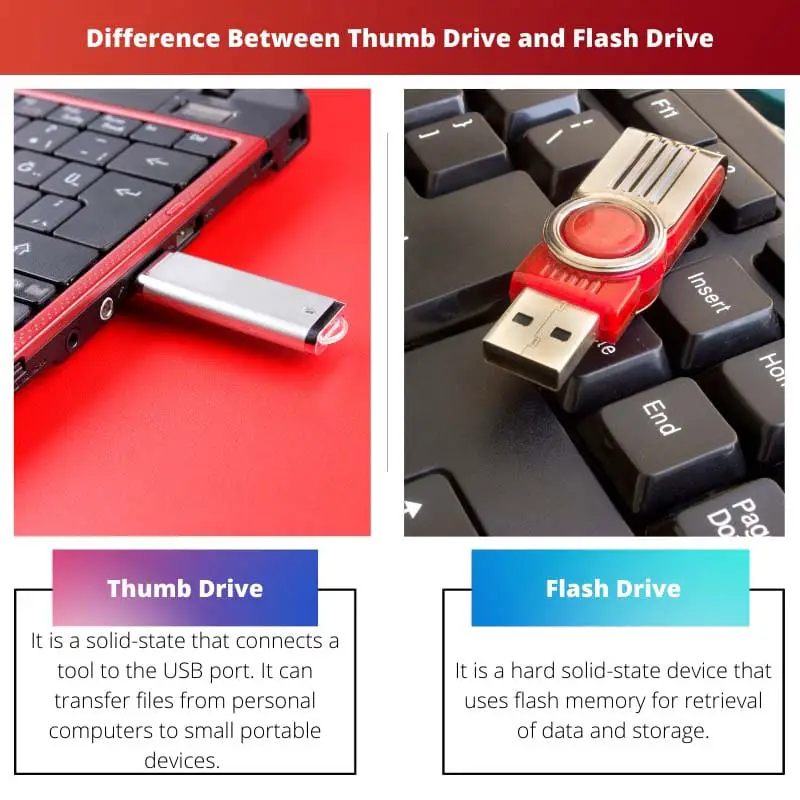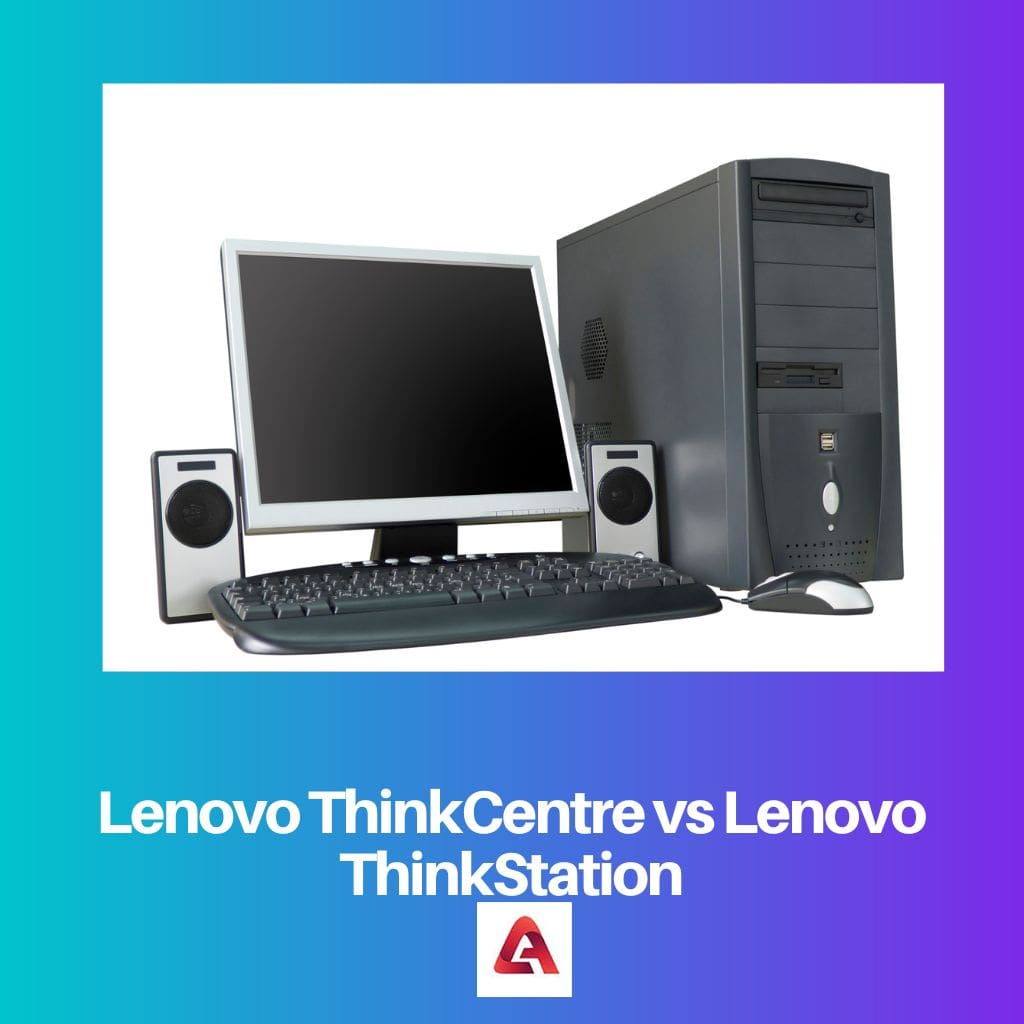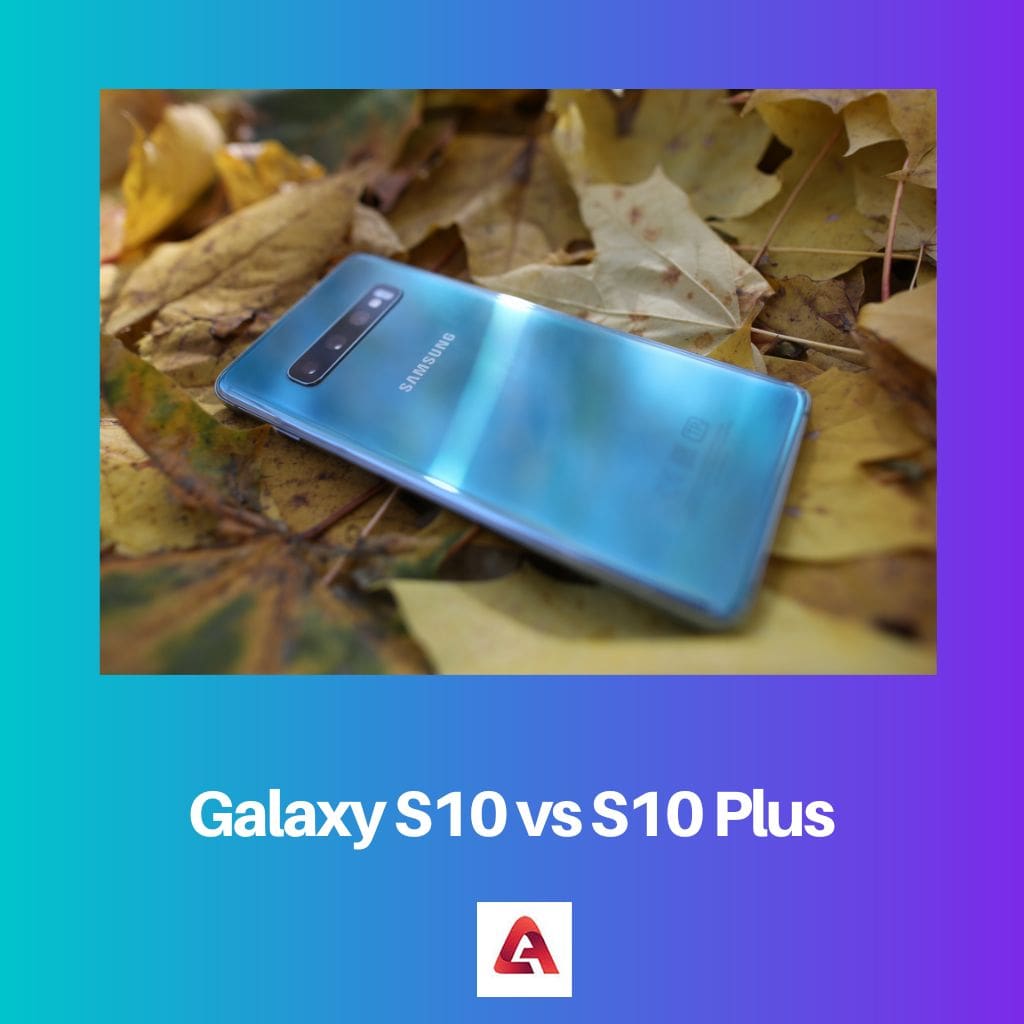There are a lot of similar terms, so people get confused or consider the terms the same. Many misconceptions are there between the terms thumb drive and flash drive.
Many people think there is no difference between thumb and flash drives as they perform a similar function. But let me clear it up, both thumb drives and flash drives are different from each other.
Key Takeaways
- Thumb drives, also known as USB drives or pen drives, are portable storage devices that connect to a computer or other electronic device through a USB port for data transfer and storage.
- Flash drives refer to any data storage device that uses flash memory, a non-volatile memory that retains data even when power is removed, including thumb drives, SD cards, and SSDs.
- Both thumb and flash drives use flash memory for data storage, but thumb drives specifically refer to portable USB storage devices. In contrast, flash drives encompass a broader range of flash memory storage devices.
Thumb Drive vs. Flash Drive
A thumb drive is a small flash drive with a USB connector that can be inserted into a computer or other device with a USB port. It is small enough to be held between the thumb and forefinger and is also known as a USB drive or jump drive. Flash drives are portable storage devices that use flash memory to store data.

A thumb drive is a small solid-state drive that connects to the USB port, also called a USB drive. In today’s generation, this technology has become the most common device to quickly transfer files or data from a personal computer or tablet to a small portable device.
A flash drive is a very solid-state, small portable, hard device placed into a USB port to store and recover data. The flash drive is also a data storage device that includes flash memory with a combined USB port.
Comparison Table
| Parameter of Comparison | Thumb Drive | Flash Drive |
|---|---|---|
| Meaning | It is a solid-state that connects a tool to the USB port. It can transfer files from personal computers to small portable devices. | It is a hard solid-sate device that uses flash memory to retrieve data and storage. |
| Technology | It is a USB or pen drive and a solid-state device to retrieve data and storage. | The flash drive uses flash memory, meaning a non-volatile memory chip, which can be programmed and erased before it comes into use again. |
| Storage capacity | The thumb drive has a storage capacity of 16, 32, or 64GB storage capacity with three main USB specifications – USB 1.0, USB 2.0, and USB 3.0 which allow for transferring data quickly. | The flash drive is a small weighted device with a thousand times more capacity to store data. |
| Durability | Only a few thumb drives are durable. | Flash drives are durable and can withstand mechanical shock, accidental falls, and intense pressure. |
What is Thumb Drive?
A Thumb drive is a small data storage portable device that uses flash memory to store data. This device can be erased and reprogrammed before the user uses it again.
It is also called a USB drive or pen drive. A Thumb drive is a small electronic device with a human thumb shaped to store and transfer data from the user’s computer to another USB drive.
The thumb drive uses three standard USB specifications, 1.0,2.0, and 3.0, which allow transferring files very quickly. A thumb drive can transfer the stored data from the computer with the help of a connector.
One excellent example of this technology is the USB wifi adapter. It is a larger hard disk commonly used in the computer, a solid-state thumb drive with no moving parts.

What is Flash Drive?
A flash drive has a higher performance option than a hard or compact disk with a high storage capacity ranging from 512 GB to 1 TB. A modern flash memory drive can access hard disks in which the control system can fully control the information’s storage.
It is a solid portable state drive that can be used as a solid substitute for CDS and HDDs. It can be further used for storing and backup data from one location to another.
Flash drives have no moving parts and are strong enough to withstand mechanical shock, accidental falls, and intense pressure. This is a device that has no movable parts; it contains a combined circuit chip that is used for storing data.
It has a plastic or aluminum casing near the memory chip. Every computer will be alerted that the flash drive has been inserted, and the device’s content will appear on the screen.
The flash drive can also be used in an android phone or connected to an iPad or iPhone. It can be written and rewritten multiple numbers of times, just like hard drives.
These drives have completely replaced the floppy disk and nearly replaced the CD, DVD, and BD disc for storage purposes.

Main Differences Between Thumb Drive and Flash Drive
- The thumb and flash drives are used for transferring and storing the data.
- Thumb drives are pen drives or USBs, which are used to retrieve data; on the other hand, flash drives are small integrated chips that can be electronically programmed and erased before they are used again.
- The thumb has the storage of 16, 32, or 64GB versions with three main USB specifications – USB 1.0, USB 2.0, and USB 3.0 which allows transferring data at a very quick rate. On the other hand, flash drives are useful or come in use for digital cameras, USB flash drives, and solid-state drives.
- Many thumb drives are available in the market, but only a few are long-lasting. On the other hand, flash drives are long-lasting and can withstand the accidental fall, mechanical shocks, and intense pressure.






